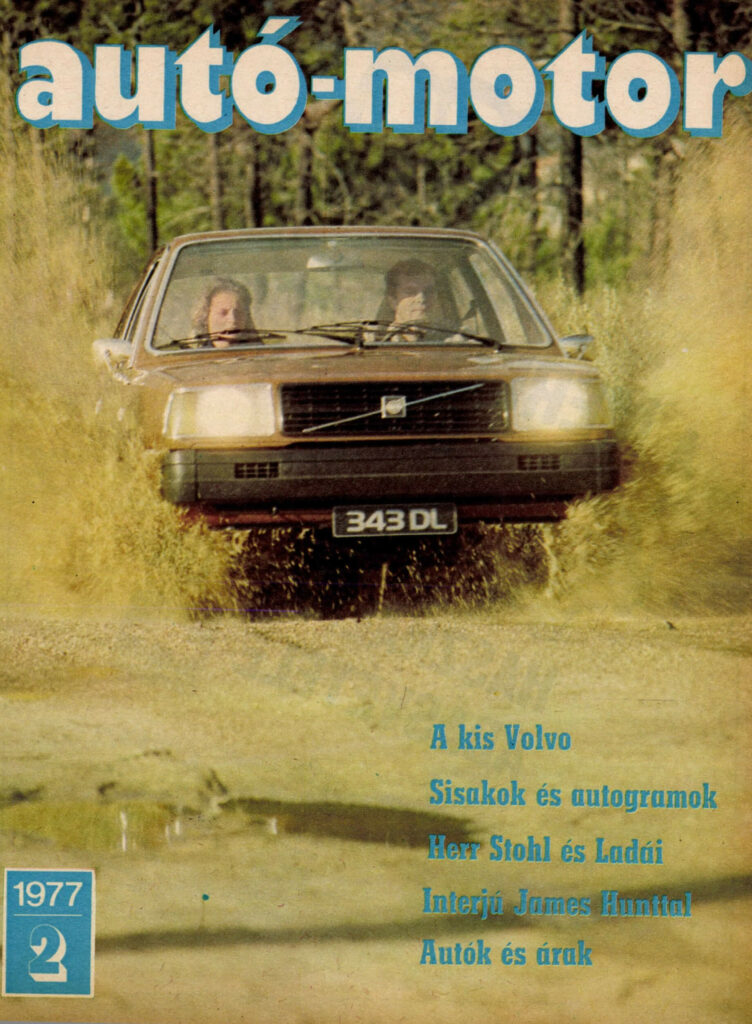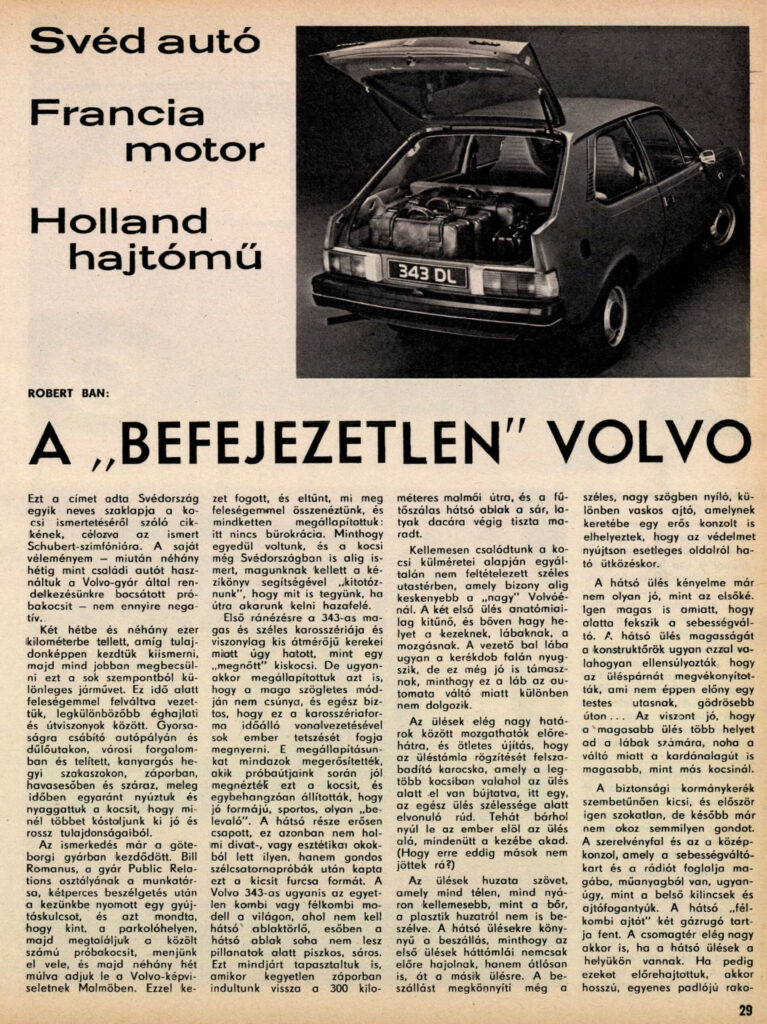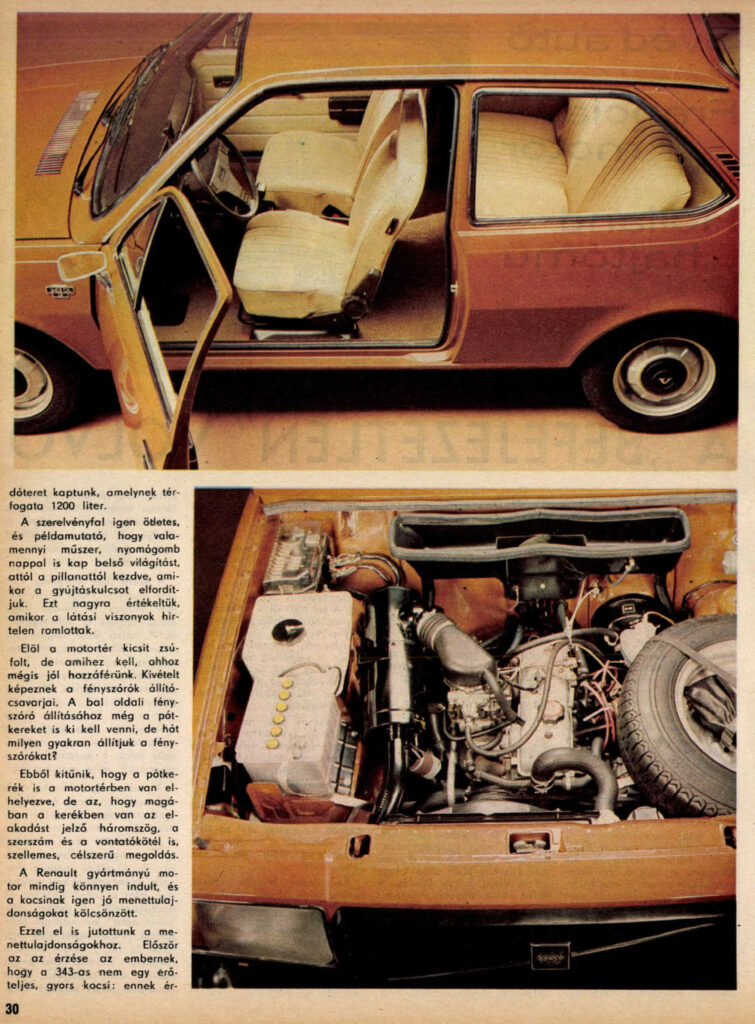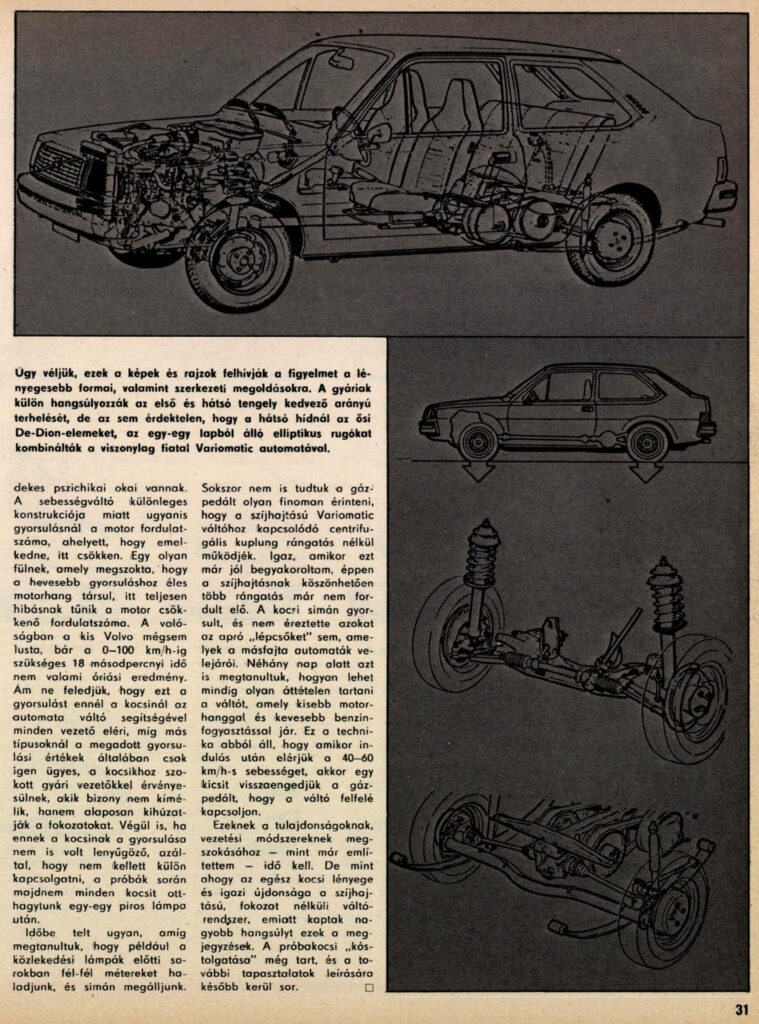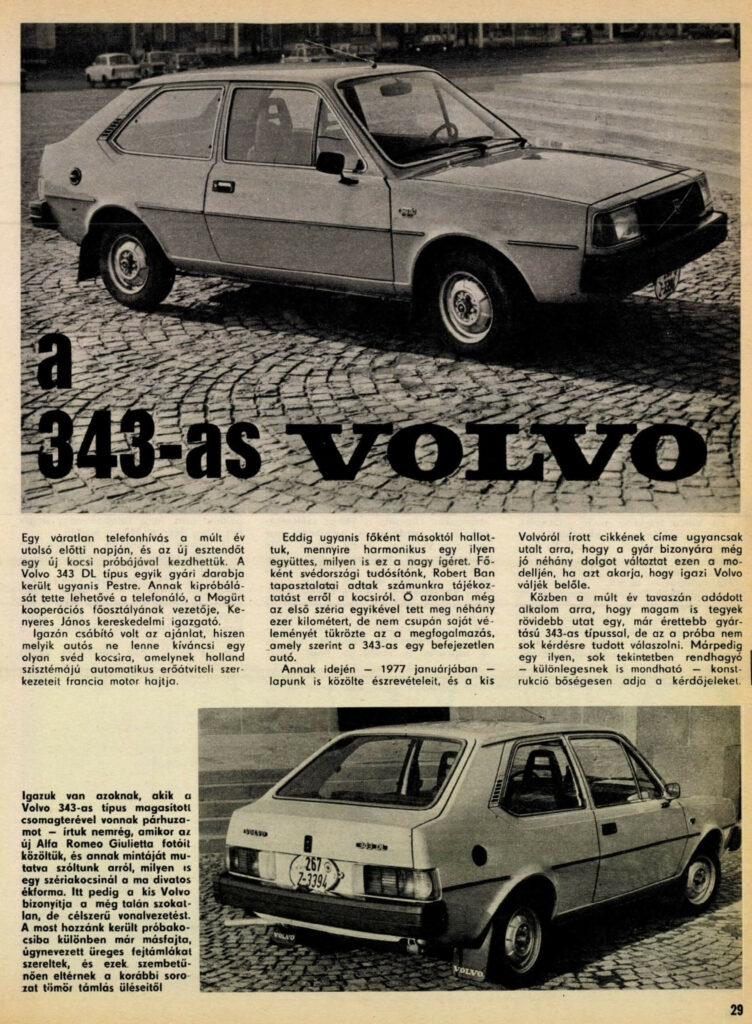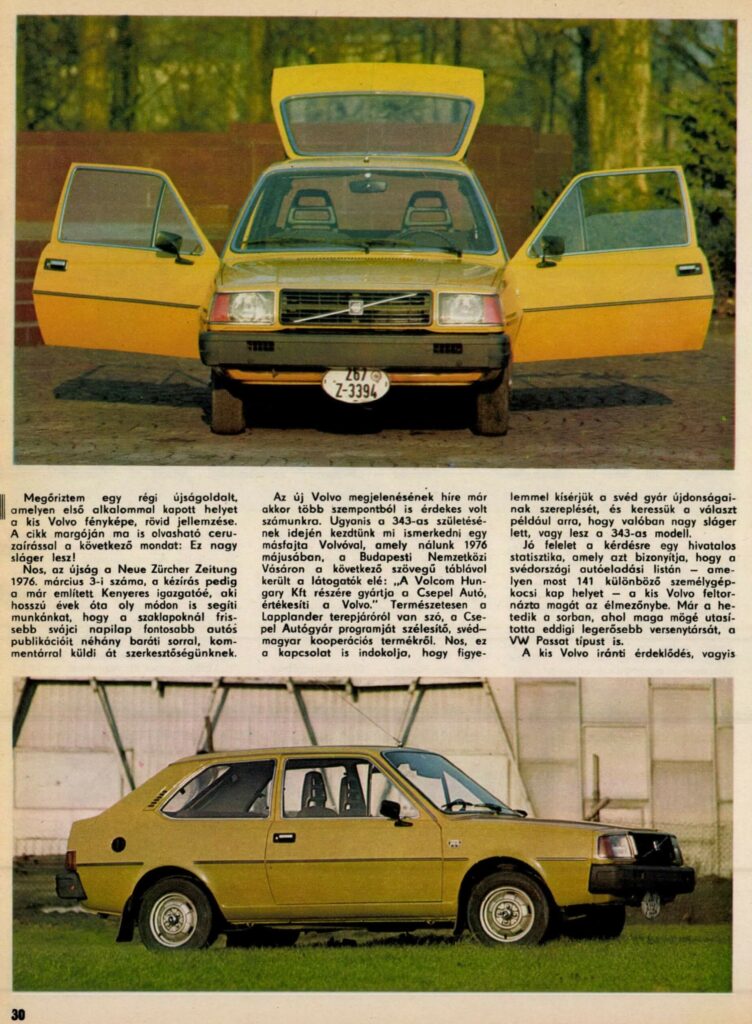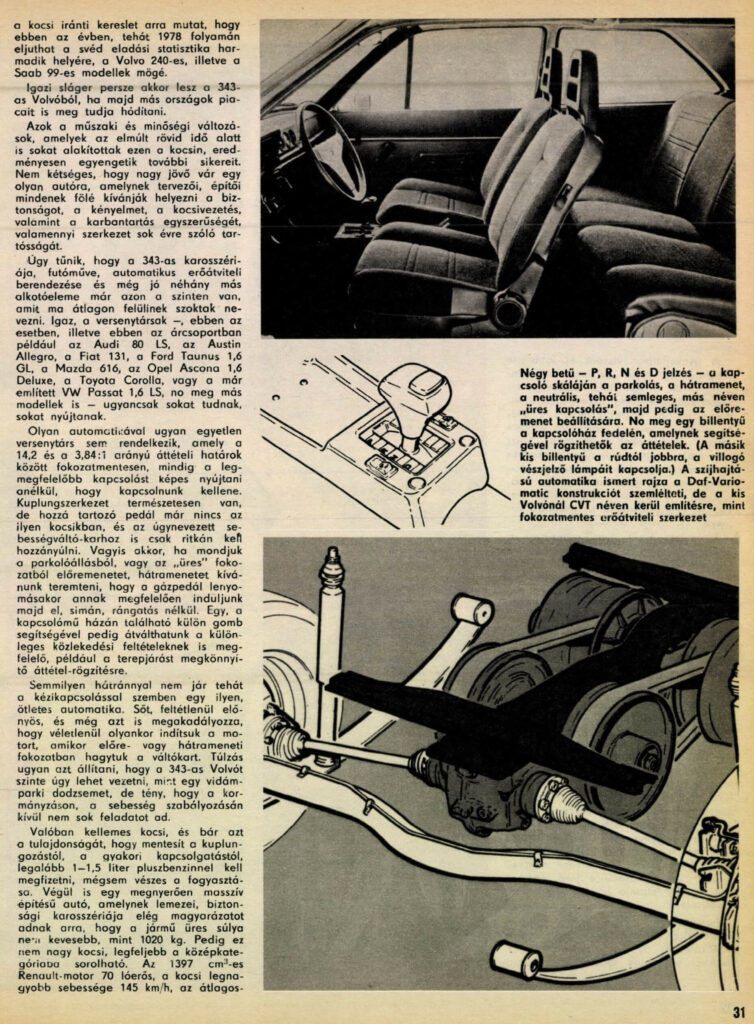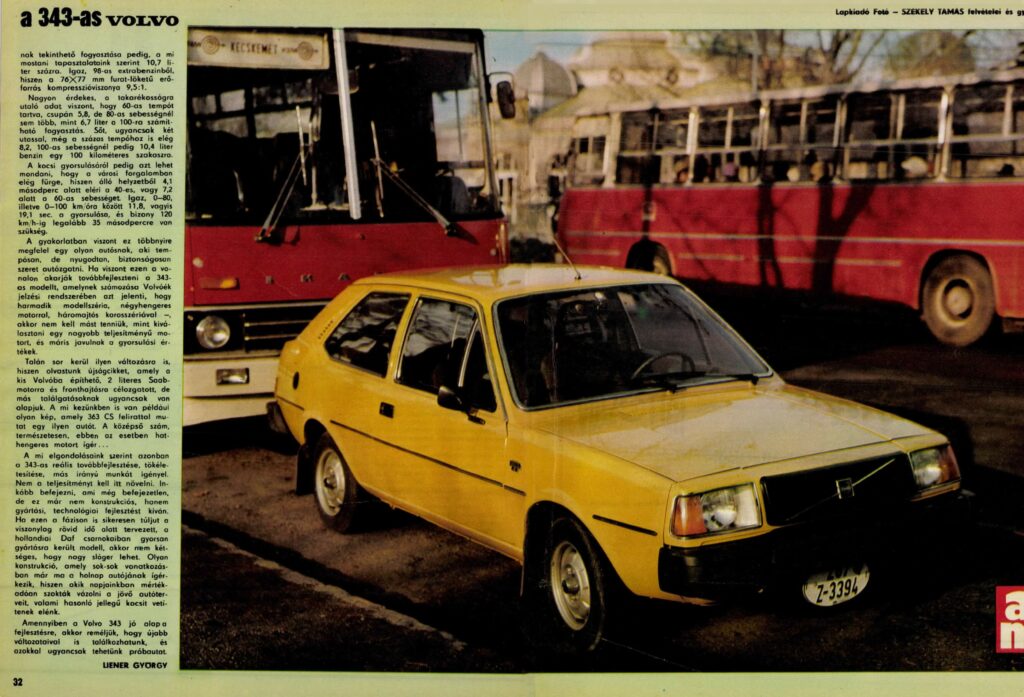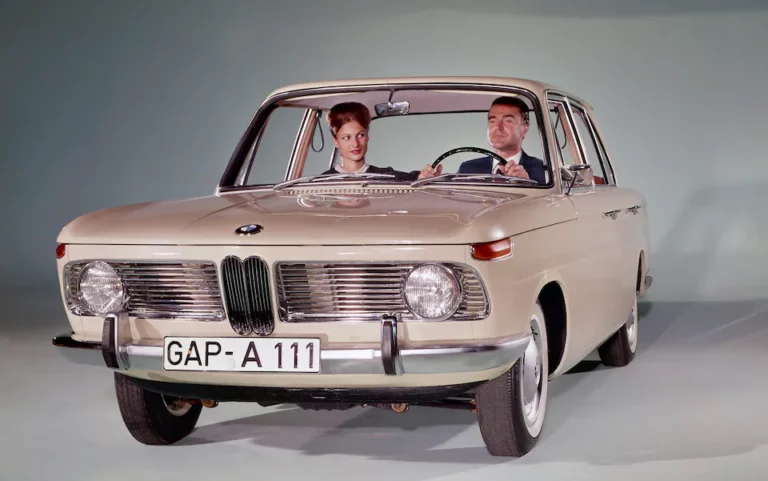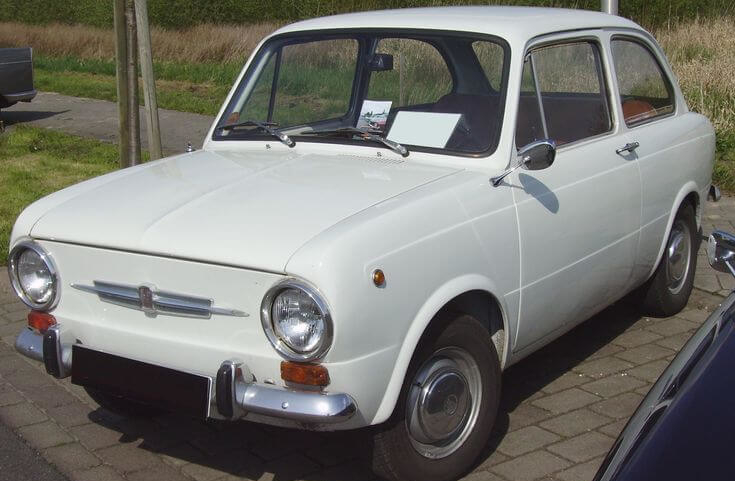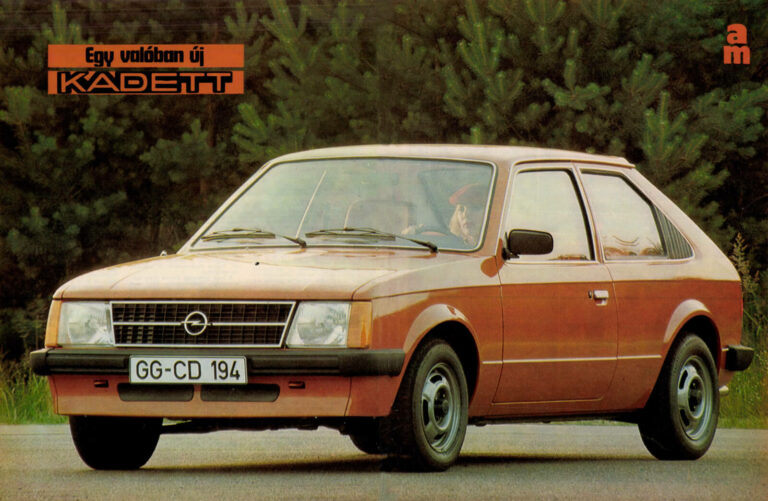1978 - The Volvo 343
After a weak start, a strong finish
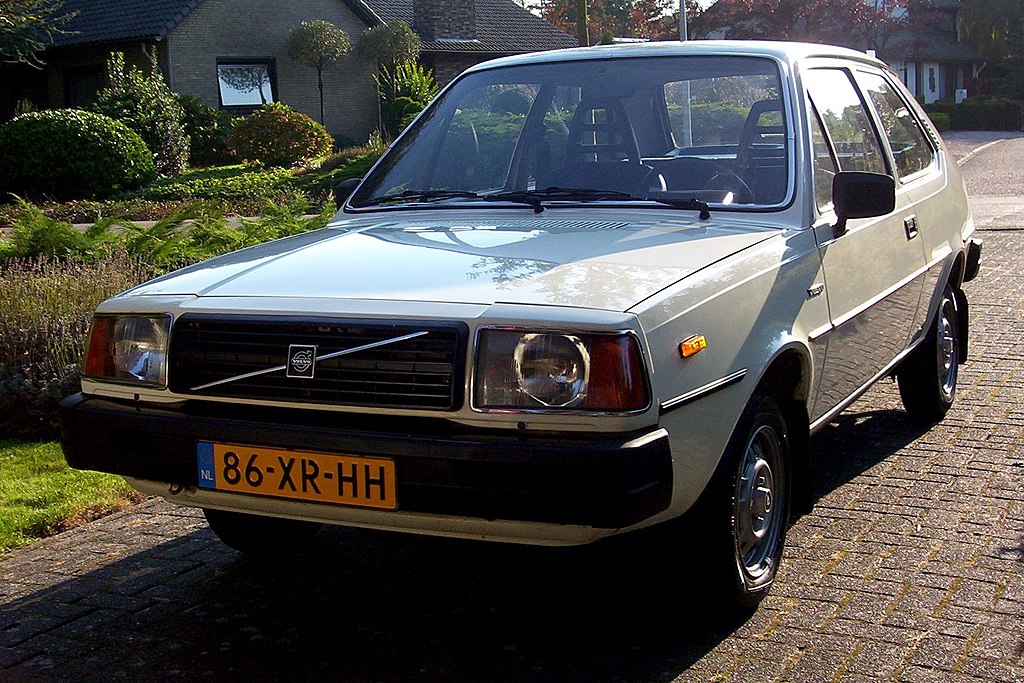
A VOLVO 300series -as 1976 and 1991 were manufactured in Sweden and the Netherlands. A 343-at February 197652kW/70LE, 1.4 kW, 1.4 litre Renault Cléon-Fonte engineral. The origins of the model's development were not originally with Volvo, but with the Dutch DAF-The Swedes came into the picture by buying a stake in DAF in 1973, and by 1975 they were majority owners.
When it was launched, the 300 series was described as heavy and weak, although it was also considered reliable and safe. With the introduction of the manual gearbox, the five-door version and newer engine variants, the car gradually gained the confidence of the market, and 1983-have crossed the 100 000-s, 1988-and for 1 000 000-number of copies sold.
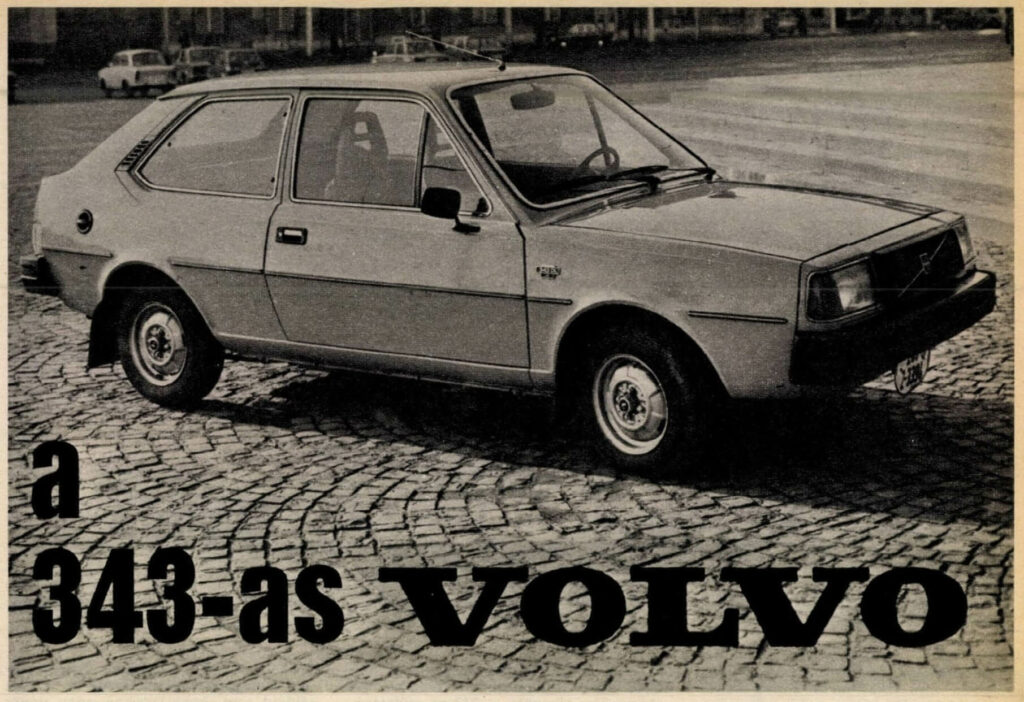
Below, the Car Engineban 1978 Marchyou can read the full transcript of the article about the test drive of the 343 Volvo in Hungary by György Liener. The earlier article linked to in the article, which mentions the car, (The "unfinished" Volvo) January 1977published in the newspaper Robert Ban and although it provides only limited additional information to the article quoted here, you can find it in the image gallery at the end of the post in a clearly readable resolution, György Liener along with. Have a good browse!
♠
An unexpected phone call on the penultimate day of last year and we started the new year with a test drive of a new car. A factory-built Volvo 343 DL was delivered to Pest. The caller, János Kenyeres, the head of the Mogürt cooperation department and commercial director, made it possible for us to test drive the new truck.
It was a very tempting offer, because what motorist wouldn't want a Swedish car with a Dutch automatic transmission powered by a French engine.
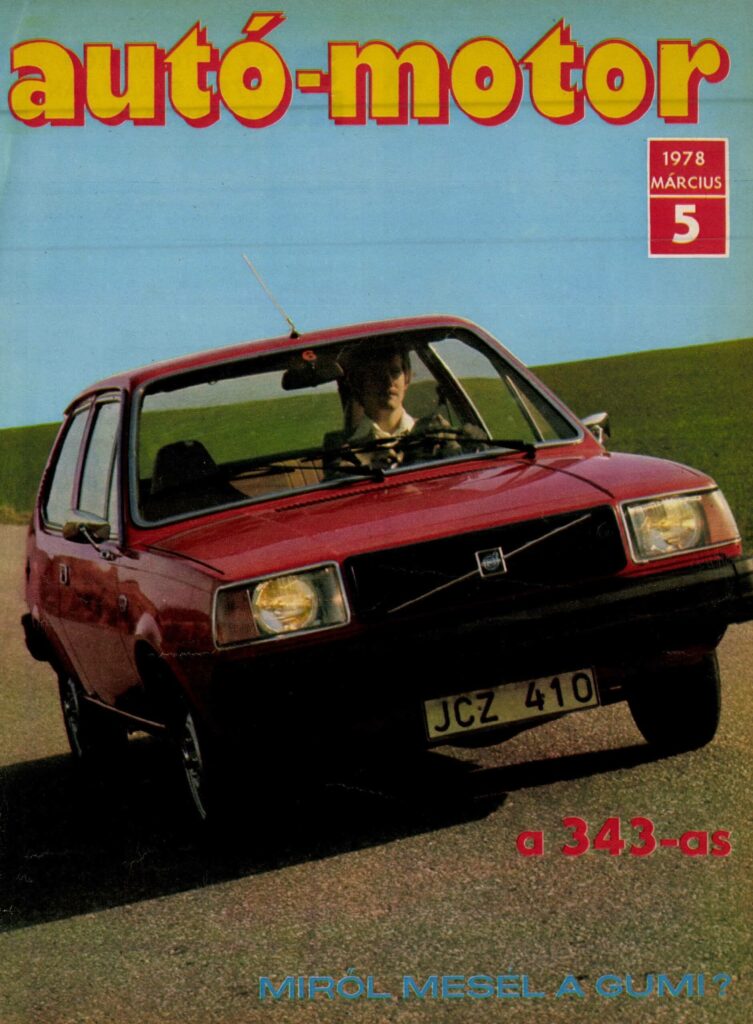
Up to now, we have mainly heard from others how harmonious such an ensemble is, and what this great promise is. It was mainly the experience of our correspondent Robert Ban in Sweden that gave us some information about this car. However, he had driven a few thousand kilometres in one of the first series, but it was not only his opinion that the 343 was an unfinished car.
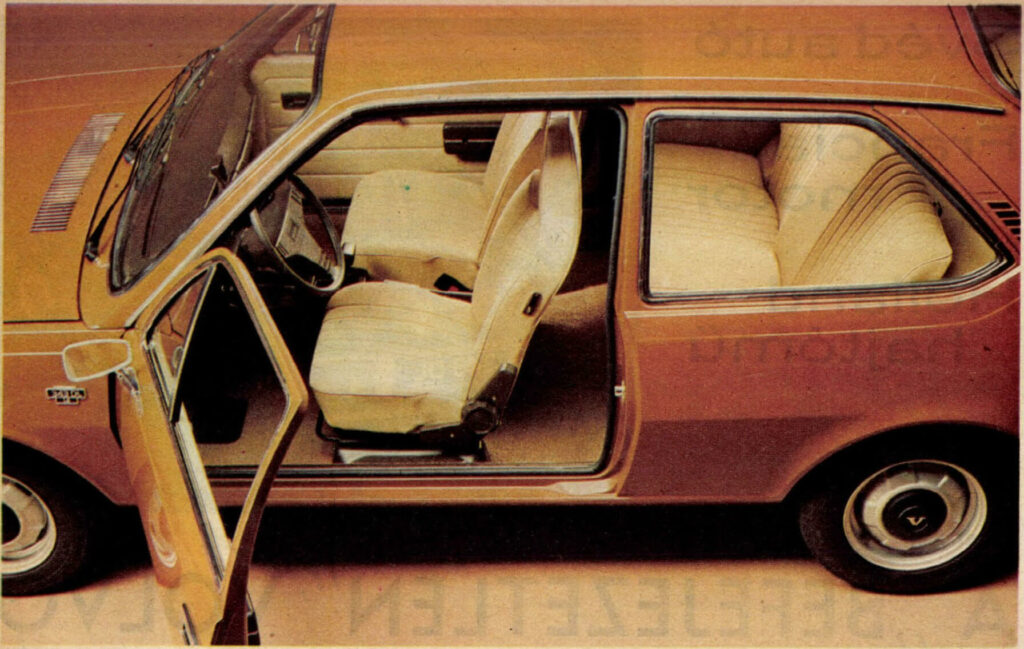
At the time - in January 1977 - our magazine also published his comments, and the title of his article on the little Volvo also indicated that the factory would certainly change a few things on this model if it wanted it to become a real Volvo.
Meanwhile, I had the opportunity to take a short trip myself in a more mature production 343 last spring, but that test didn't answer many questions. And such an unconventional - and in many respects unique - design provides plenty of question marks.
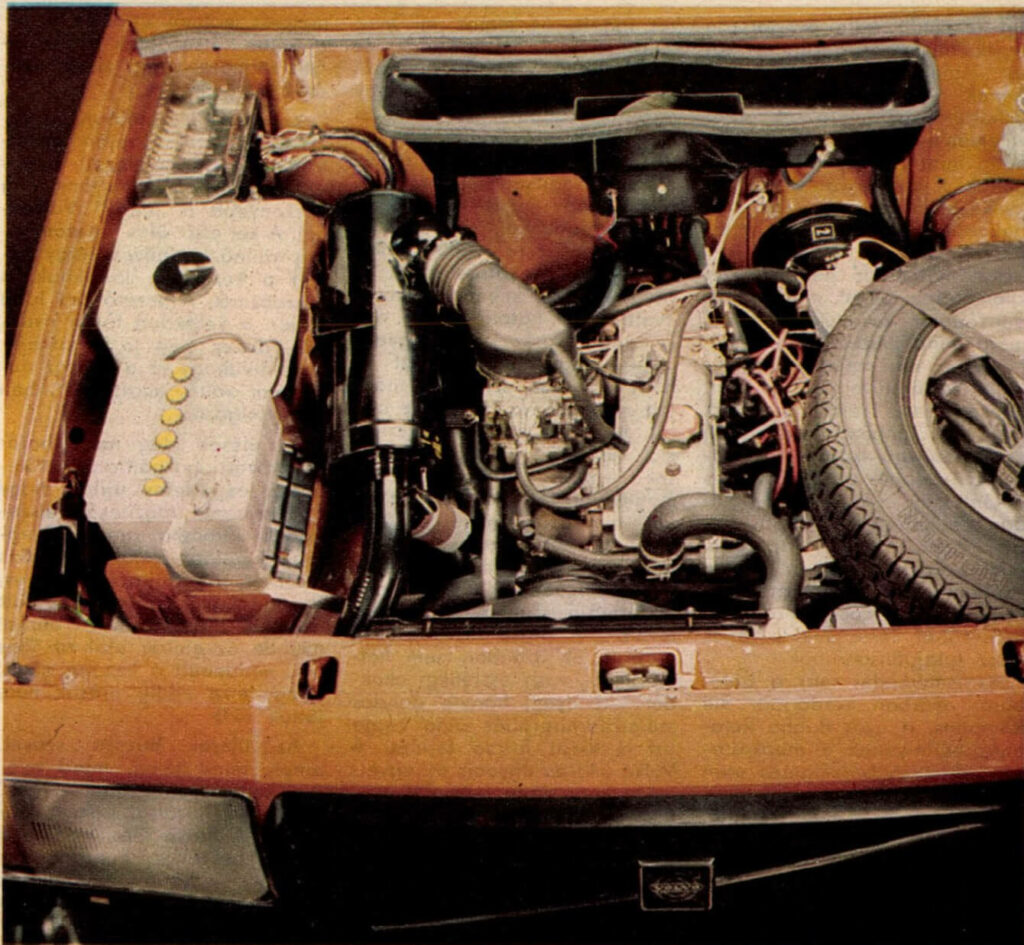
I kept an old newspaper page with a photo and a brief description of the little Volvo for the first time. In the margin of the article, you can still read in pencil the following sentence.
Well, the newspaper is the Neue Zürcher Zeitung of 3 March 1976, and the manuscript belongs to the aforementioned Director Kenyeres, who has been helping us for many years by sending us the most important Swiss daily newspaper publications with a few friendly lines of commentary. Even then, the news of the launch of the new Volvo was interesting for us in many ways. For it was at the time of the 343's birth that we began to get acquainted with a different kind. It was presented to visitors at the Budapest International Fair in May 1976 with the following sign: "Manufactured for Volcom Hungary Kft. by Csepel Autó, sold by Volvo." It was, of course, the Lapplander SUV, a Swedish-Hungarian cooperative product that broadened Csepel Autógyár's range. Well, it is this relationship that justifies our close monitoring of the Swedish factory's new products, and our search for answers to questions such as whether the 343 has been or will be a big hit.
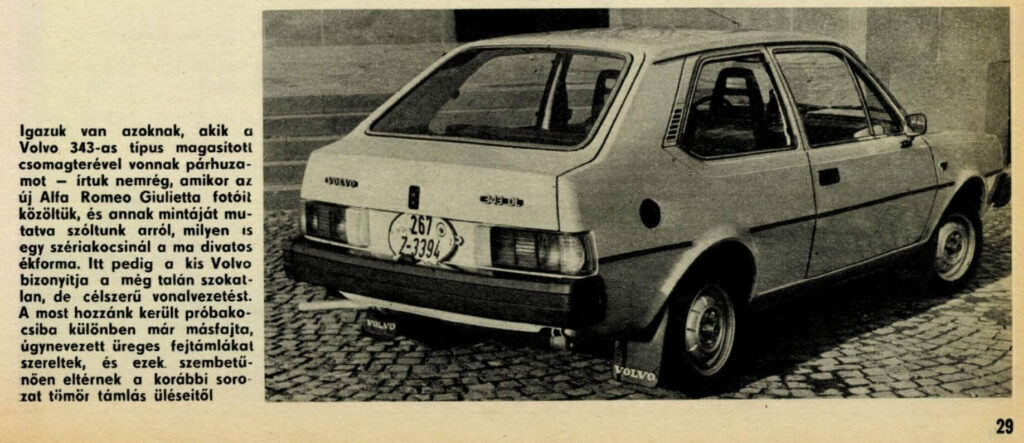
A good answer to this question is an official statistic that shows that the little Volvo has climbed to the top of the Swedish car sales list, which now includes 141 different cars. It is now seventh in the ranking, where it has also beaten its strongest competitor, the WW Passat.
The interest in the little Volvo, i.e. the demand for the car, indicates that it could reach the third place in the Swedish sales statistics this year, i.e. during 1978, behind the Volvo 240 and the Saab 99.
Of course, the 343 Volvo will only become a real hit when it can conquer markets in other countries.
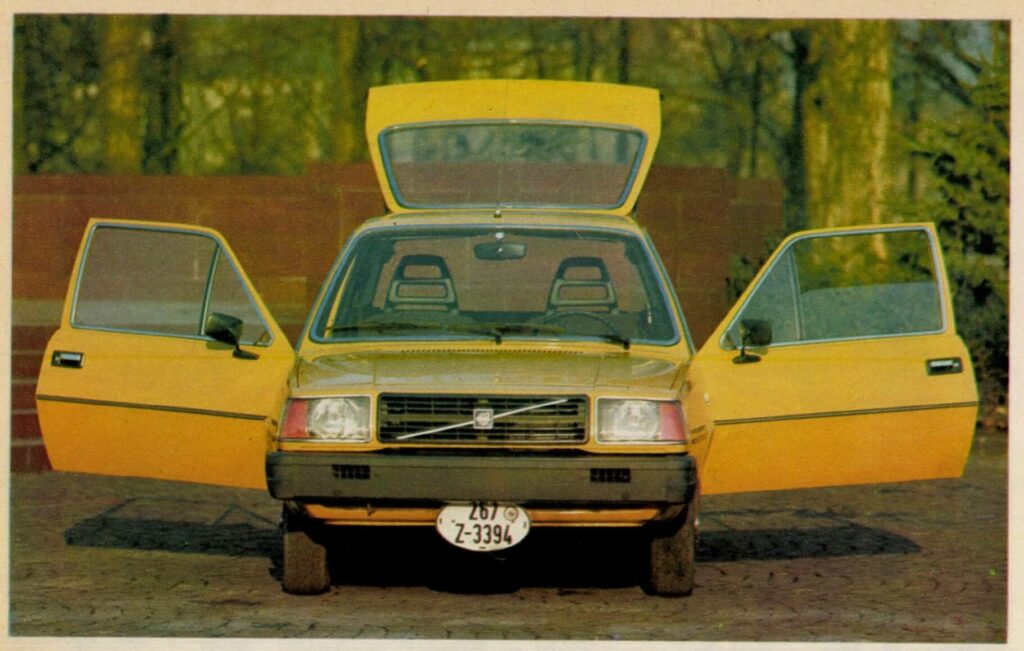
The technical and qualitative changes that have shaped this car in the last short time are effectively paving the way for its future success. There can be no doubt that there is a great future for a car whose designers and builders have placed safety, comfort, ease of driving and maintenance above all else, and the durability of all its components over many years.
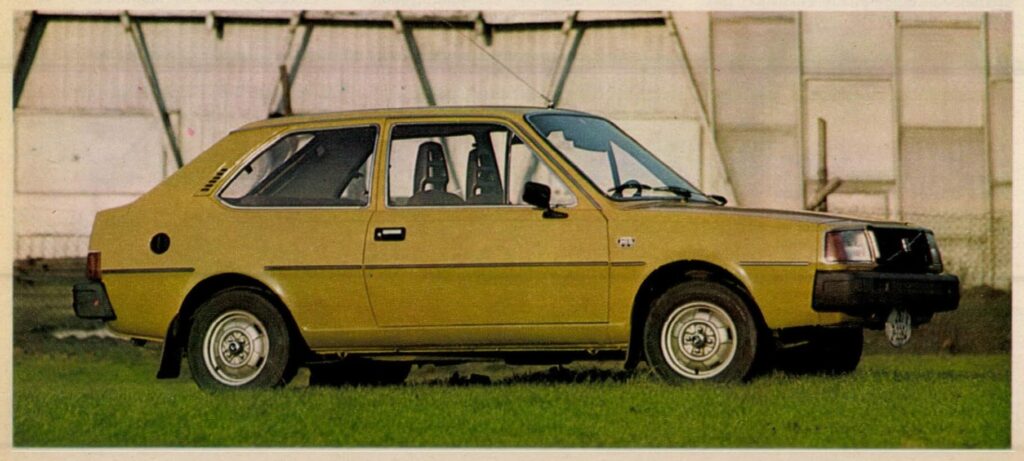
It seems that the 343's body, chassis, automatic transmission and a few other components are already at what is now considered to be a very high level. True, the competition - in this case, and in this price range, for example, the Audi 80 LS, the Austin Allegro, the Fiat 131, the Ford Taunus 1.6 GL, the Mazda 616, the Opel Ascona 1.6 Deluxe, the Toyota Corolla, the aforementioned VW Passat 1.6 LS and other models - also have a lot to offer.
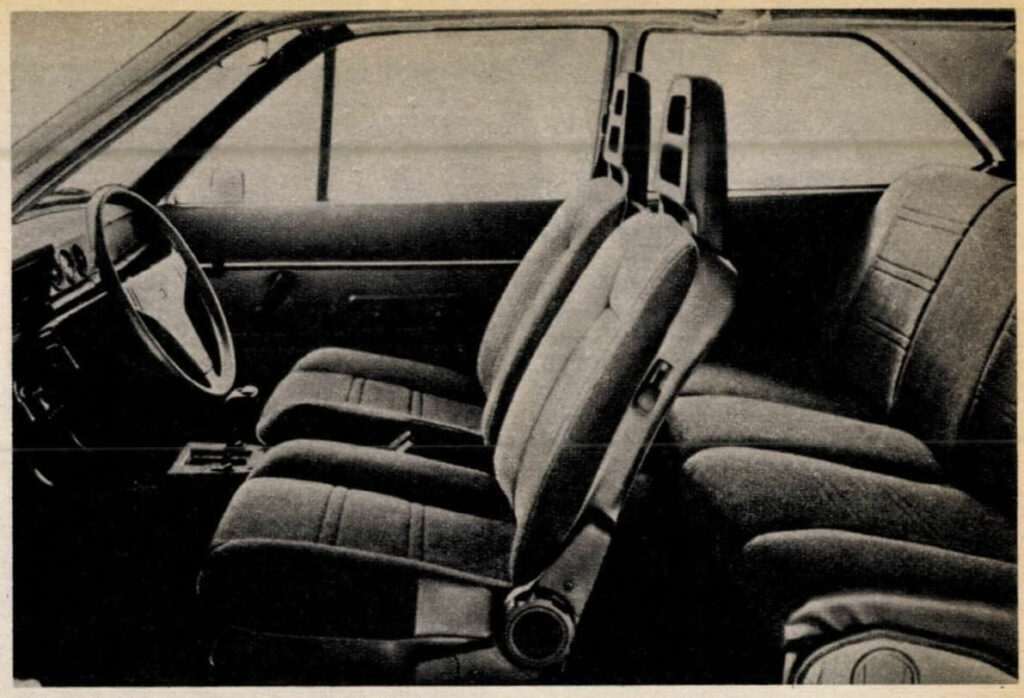
No other competitor has an automatic that can deliver the best gear ratio between 14.2 and 3.84:1, steplessly and always without the need to change gears. There is, of course, a clutch, but there is no pedal on these cars, and the so-called gear lever is rarely touched. In other words, if you want to go forwards or reverse from, say, a parked position or an 'idle' gear, you can start the car accordingly, without jerking, when you press the accelerator. And a separate button on the gearbox housing allows you to switch to a gear-ratio setting that is suitable for special driving conditions, such as off-road driving.
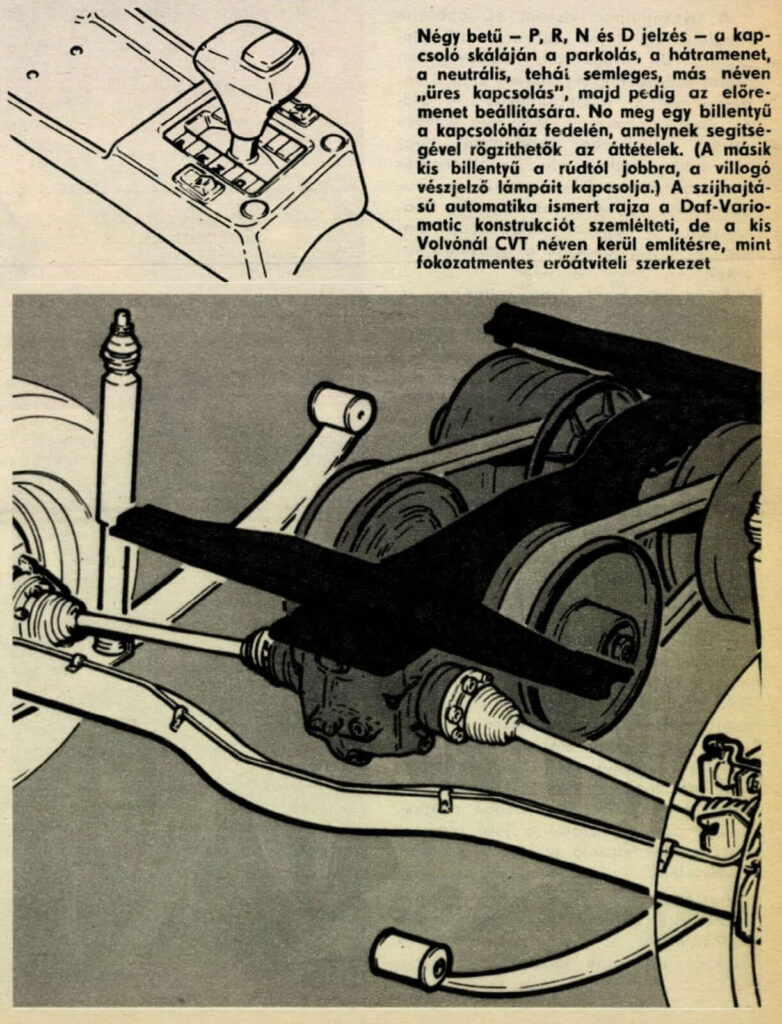
There is therefore no disadvantage to such an ingenious automatic over a manual switch. In fact, it's definitely an advantage, and even prevents you from accidentally starting the engine when you've left the gear lever in forward or reverse. While it's an exaggeration to say that the 343 Volvo can be driven almost like an amusement park bumper car, the fact is that it doesn't give you much to do other than steer and control speed. It's a really nice car, and although the fact that it doesn't need clutching or frequent gear changes means you have to pay for at least 1-1.5 litres of extra petrol, it's not bad on fuel consumption. It is, after all, an impressively solidly built car, whose sheetmetal and safety bodywork give enough reason to believe that the unladen weight of the vehicle is no less than 1,020 kg. And yet it is not a big car, at best a mid-size car. The 1397 cm Renault engine produces 70 hp, the car has a top speed of 145 km/h and, according to our current experience, an average fuel consumption of 10.7 litres per 100 km/h. True, on 98 extra petrol, as the 76 X 77 mm bore-stroke engine has a compression ratio of 9.5:1.
A very interesting figure, which is an indication of fuel economy, is that at 60 km/h the fuel consumption is only 5.8 litres per 100 km, but at 80 km/h it is no more than 6.7 litres. In fact, with two passengers, even at 100 km/h, the fuel consumption is 8.2 litres per 100 kilometres, and 10.4 litres at 100 km/h.
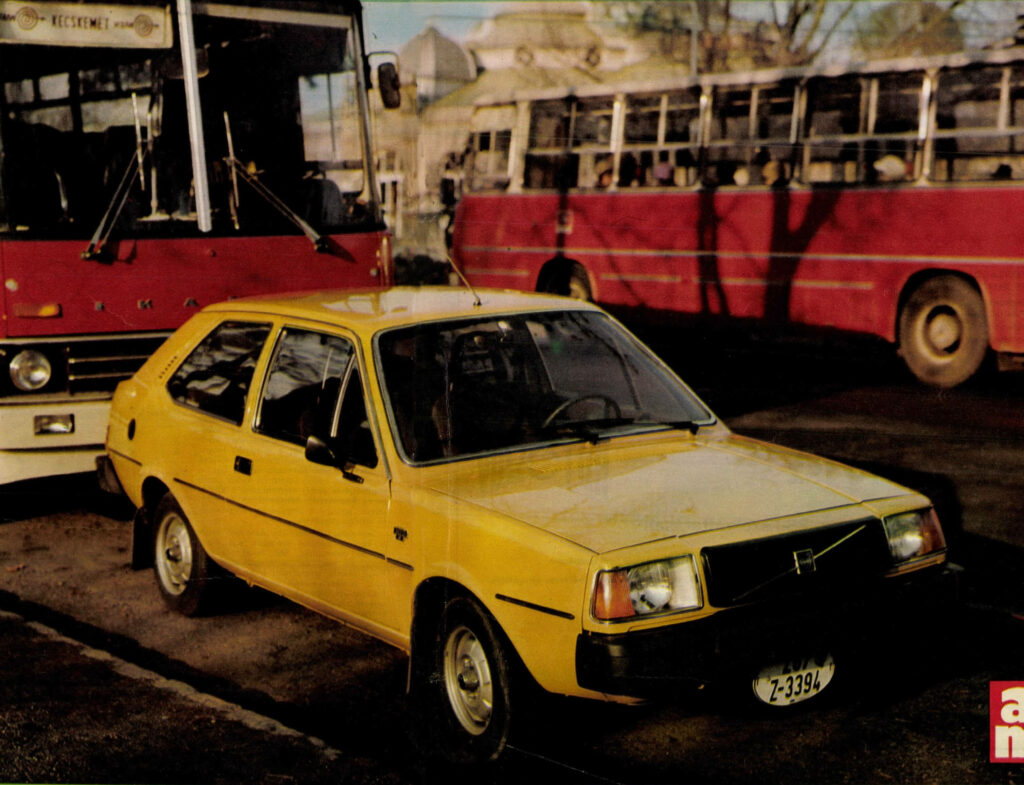
As for acceleration, the car is quite agile in urban traffic, reaching 40 km/h from a standstill in 4.1 seconds or 60 km/h in 7.2 seconds. True, the acceleration from 0 to 80 km/h and 0 to 100 km/h is 11.8 or 19.1 seconds, and it takes at least 35 seconds to 120 km/h.
needed.
In practice, however, it is mostly suitable for a driver who likes to drive at speed, but in a calm and safe way. But if you want to improve on the 343, which in Volvo's designation system is numbered third - model series, four-cylinder engine, three-door body - all you have to do is choose a more powerful engine and you'll get better acceleration.
There may be such a change, as we read a newspaper article that hinted at a 2 litre Saab engine and front-wheel drive in the small Volvo, but there is also some other speculation. We have, for example, a picture of such a car with 363 CS lettering. The middle number, of course, in this case promises a six-cylinder engine...
However, we believe that the realistic development and improvement of 343 requires work in a different direction. It is not performance that needs to be improved here. Rather, it is to finish what is still unfinished, but this requires not constructional but production and technological improvements. If the model, which was designed in a relatively short space of time and quickly produced in the Daf workshops in the Netherlands, can successfully pass this stage, there is no doubt that it could be a big hit. It is a design that in many respects already promises to be the car of tomorrow, because those who are nowadays so authoritative in their sketches of future car designs are already predicting something similar.
If the Volvo 343 is a good basis for development, we hope to see other versions - and test drive them too.
MR LIENER
